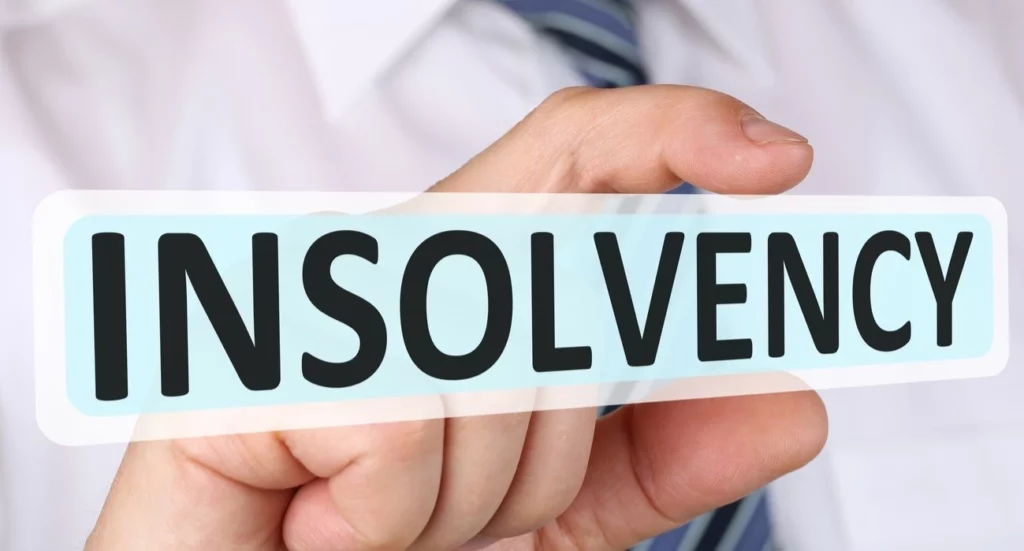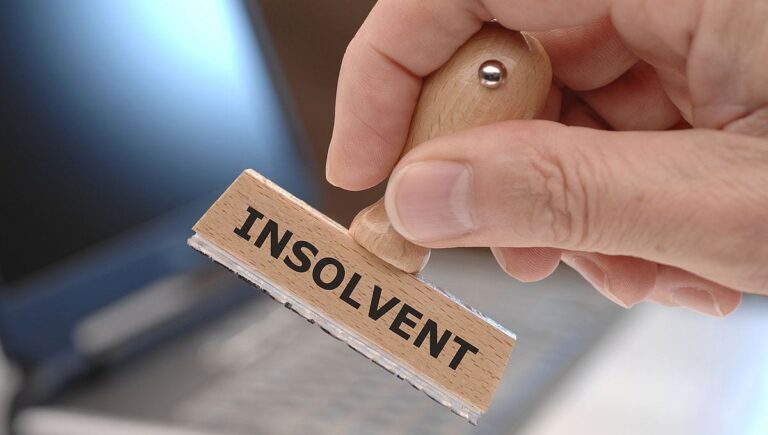Understanding Insolvency Proceedings and your Legal Options
Insolvency can be a complex and overwhelming situation to find yourself in. It is important to have a clear understanding of what it entails and what your legal options are. This article aims to provide you with valuable insights into the world of insolvency and guide you through the process.
By the end of this article, you will have a better understanding of insolvency proceedings, what do insolvency lawyers do and the various legal options available to you.
Defining Insolvency: A Basic Overview
Insolvency refers to a financial state where an individual or organization is unable to pay their debts as they become due. It is important to note that insolvency is different from bankruptcy, although the two terms are often used interchangeably. While insolvency deals with the inability to repay debts, bankruptcy is a legal process that provides a fresh start for individuals and businesses who can no longer meet their financial obligations. Learn more how insolvency lawyers provide guidance and support.

The Difference Between Insolvency and Bankruptcy
Insolvency and bankruptcy are related concepts, but they are not synonymous. Insolvency is a financial state, whereas bankruptcy is a legal process. Insolvency typically precedes bankruptcy, as it serves as a trigger for individuals or businesses to seek the protection and relief that bankruptcy offers. Bankruptcy allows debtors to have their debts discharged or restructured through a court-approved plan, providing a fresh start and an opportunity to rebuild financial stability.
Common Causes of Insolvency
Understanding the common causes of insolvency can help individuals and businesses identify potential issues before they escalate. Ineffective financial management, economic downturns, unexpected expenses, excessive borrowing, and legal disputes are some of the common factors that can contribute to insolvency. By recognizing these warning signs, individuals and businesses can take early intervention measures to prevent insolvency.
One of the main causes of insolvency is ineffective financial management. This can include poor budgeting, lack of financial planning, and failure to monitor cash flow. When individuals or businesses do not have a clear understanding of their financial situation and fail to make informed decisions, they may find themselves unable to meet their financial obligations.
Economic downturns can also play a significant role in pushing individuals and businesses into insolvency. During times of recession or economic instability, businesses may experience a decline in sales and revenue, making it difficult to cover expenses and repay debts. Similarly, individuals may face job losses or reduced income, making it challenging to keep up with financial commitments.
The Insolvency Process: A Step-by-Step Guide
When faced with insolvency, it is important to understand the step-by-step process that follows. This knowledge will help you navigate through the various stages and make informed decisions regarding your financial situation.
Insolvency can be a daunting and complex process, but with the right guidance and understanding, it is possible to navigate through it effectively. By following a structured approach and seeking professional advice, individuals can work towards resolving their financial difficulties and achieving a fresh start.
Initial Assessment and Declaration
The first step in the insolvency process is to assess your financial situation and declare insolvency. This involves gathering all relevant financial documents and seeking professional advice. Insolvency practitioners play a vital role in this process, providing guidance and expertise to debtors.
During the initial assessment, it is crucial to provide accurate and detailed information about your financial situation to the insolvency practitioner. This information will form the basis of the repayment plan and negotiations with creditors. Transparency and cooperation are key elements in this stage to ensure a smooth process moving forward.
The Role of the Insolvency Practitioner
An insolvency practitioner is a licensed professional who specializes in dealing with insolvency cases. Their primary role is to act as a mediator between debtors and creditors, ensuring the fair treatment of all parties involved. They will assess your financial situation, develop a repayment plan, and negotiate with your creditors on your behalf.
Insolvency practitioners are bound by professional codes of conduct and are required to act impartially in the best interests of all parties. Their expertise and experience in insolvency proceedings can provide individuals with the necessary support and guidance to navigate through the complexities of the process.

The Impact on Assets and Credit
One major concern for individuals facing insolvency is the impact on their assets and credit. Insolvency may result in the sale of certain assets to repay debts. Additionally, your credit rating may be affected, making it challenging to obtain loans or credit in the future. However, it is essential to remember that these effects are not permanent and can be rebuilt over time.
It is important to work closely with your insolvency practitioner to understand the implications of insolvency on your assets and credit. Developing a clear strategy to manage these impacts and rebuild your financial standing is crucial for long-term financial stability. By taking proactive steps and following the guidance of professionals, individuals can navigate through the challenges of insolvency and work towards a brighter financial future.
Legal Options When Facing Insolvency
If you find yourself in a situation where insolvency is imminent, several legal options can help you navigate through this challenging period. These options aim to provide debtors with alternative solutions to bankruptcy.
When facing insolvency, it’s crucial to explore all available avenues to regain financial stability. Let’s delve into two additional legal options that can provide you with the much-needed relief.
Individual Voluntary Arrangements (IVAs)
An Individual Voluntary Arrangement (IVA) is a legally binding agreement between a debtor and their creditors. It allows you to repay your debts over an extended period while making affordable monthly payments. IVAs provide a structured repayment plan, giving debtors the opportunity to avoid bankruptcy and manage their finances effectively.
One of the significant advantages of an IVA is that it puts you in control of your financial situation. By working closely with an insolvency practitioner, you can negotiate with your creditors to reduce your debt and establish a manageable repayment plan. This arrangement not only helps you avoid the stigma associated with bankruptcy but also allows you to protect your assets, such as your home or business.
Debt Relief Orders (DROs)
Debt Relief Orders (DROs) are designed for individuals who have minimal assets and low income, making them unable to repay their debts. A DRO freezes your debts for a specific period, during which you are not required to make any payments. If your financial situation does not improve during this period, the debts are written off, providing you with a fresh start.
Unlike bankruptcy, which involves a formal court process, DROs offer a simpler and more accessible solution for those with limited means. To qualify for a DRO, you must meet specific criteria, such as having less than £20,000 in debt, less than £1,000 in assets, and a disposable income of less than £50 per month. This option can be a lifeline for individuals who are struggling financially and need a way out without the complexities associated with bankruptcy.
Bankruptcy: A Last Resort?
Bankruptcy should be considered as a last resort when all other options have been exhausted. While it offers a fresh start, it also comes with significant financial and legal implications. Bankruptcy can affect your credit rating, employment opportunities, and access to future credit. It is essential to seek professional advice and explore alternative options before considering bankruptcy.
It’s worth noting that bankruptcy is not always the end of the road. With the right guidance and support, individuals who have gone through bankruptcy can rebuild their financial lives and regain control over their future. However, it is crucial to approach this decision with caution and fully understand the consequences it may have on your personal and professional life.
In conclusion, when facing insolvency, it’s crucial to be aware of the legal options available to you. Whether it’s exploring the benefits of an Individual Voluntary Arrangement (IVA), considering a Debt Relief Order (DRO), or as a last resort, contemplating bankruptcy, each option comes with its own set of advantages and implications. Seeking professional advice and understanding the intricacies of these options can help you make an informed decision that best suits your financial circumstances.

The Aftermath of Insolvency: What to Expect
Once you have successfully navigated the insolvency process, it is essential to understand the long-term implications and what to expect moving forward.
Following the resolution of insolvency, individuals often find themselves facing a period of financial restructuring and adjustment. This phase involves meticulous planning and disciplined financial decisions to pave the way for a stable economic future. By reassessing spending habits, creating realistic budgets, and exploring new avenues for income generation, individuals can gradually rebuild their financial foundation.
Long-term Financial Implications
Insolvency can have long-term financial implications that require careful management. It may take time to rebuild your credit rating and regain financial stability. However, by implementing effective financial management strategies and learning from past mistakes, you can work towards a brighter financial future.
Moreover, post-insolvency, individuals may encounter challenges in accessing credit facilities or securing favorable loan terms. It is crucial to demonstrate responsible financial behavior, such as timely bill payments and prudent debt management, to enhance creditworthiness over time. Patience and perseverance are key virtues in the journey towards financial recovery.
Emotional and Psychological Effects
The aftermath of insolvency can also have emotional and psychological effects on individuals. The stress and anxiety associated with financial difficulties can take a toll on mental well-being. It is crucial to seek support from friends, family, or professional counselors during this period.
Furthermore, individuals may experience feelings of guilt, shame, or inadequacy following insolvency. It is important to address these emotions constructively by engaging in self-care practices, seeking professional therapy if needed, and reframing perspectives on financial setbacks as opportunities for growth and resilience. Building a strong support network and practicing mindfulness can aid in navigating the emotional complexities of post-insolvency life.
Prevention and Early Intervention Strategies
While facing insolvency can be overwhelming, implementing prevention and early intervention strategies can help individuals and businesses mitigate the risk of insolvency.
Recognizing the Warning Signs
Recognizing the warning signs of financial distress is crucial for early intervention. These signs may include consistently struggling to pay bills, excessive borrowing, high levels of debt, and persistent cash flow problems. By identifying these signs early on, you can take the necessary steps to address them and prevent insolvency.
Seeking Professional Financial Advice
Seeking professional financial advice is essential when facing insolvency or experiencing financial difficulties. Financial advisors and insolvency practitioners can provide guidance tailored to your specific situation, helping you make informed decisions and explore alternative solutions.
Debt Management and Restructuring Plans
Implementing effective debt management and restructuring plans is another key strategy for preventing insolvency. This may involve negotiating with creditors, consolidating debts, or seeking debt counseling services. By managing and restructuring your debts, you can regain control of your financial situation and prevent the need for insolvency proceedings.In conclusion, understanding insolvency proceedings and your legal options is crucial when faced with financial difficulties. By familiarizing yourself with the ins and outs of insolvency, you can navigate through the process more confidently. Additionally, exploring alternative legal options and implementing prevention strategies can help you avoid the need for bankruptcy and achieve long-term financial stability. Remember, seeking professional advice is essential throughout this journey to make informed decisions and secure a brighter financial future.




